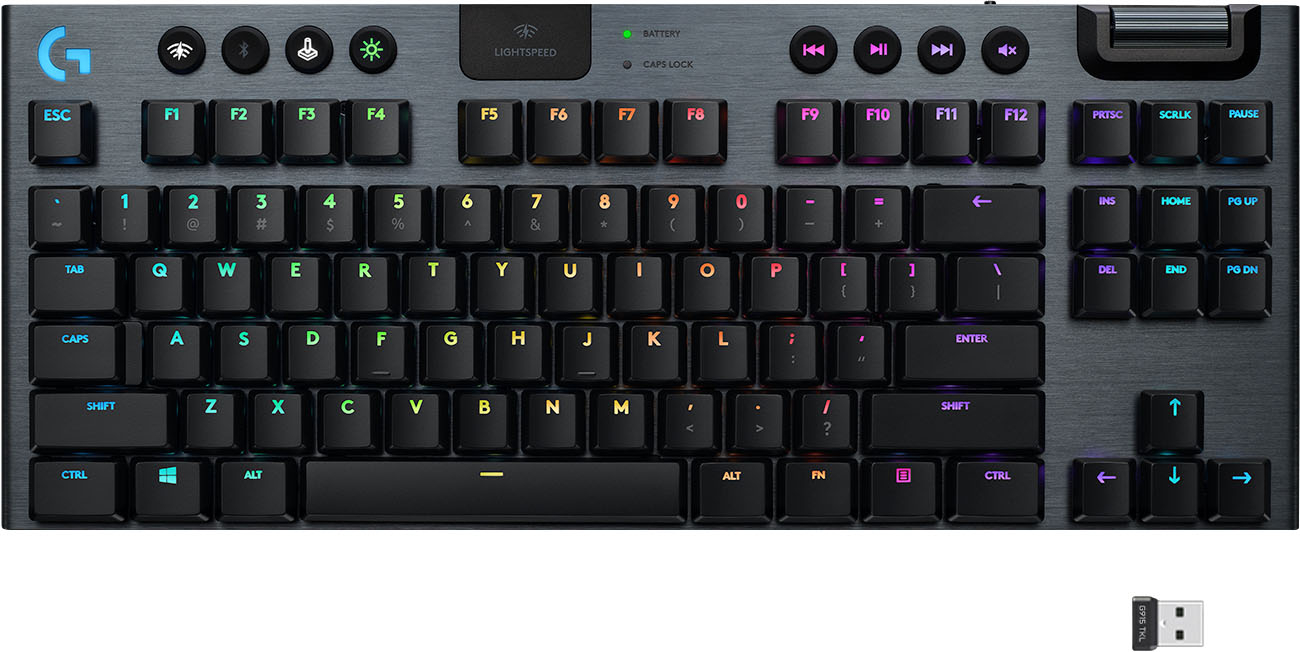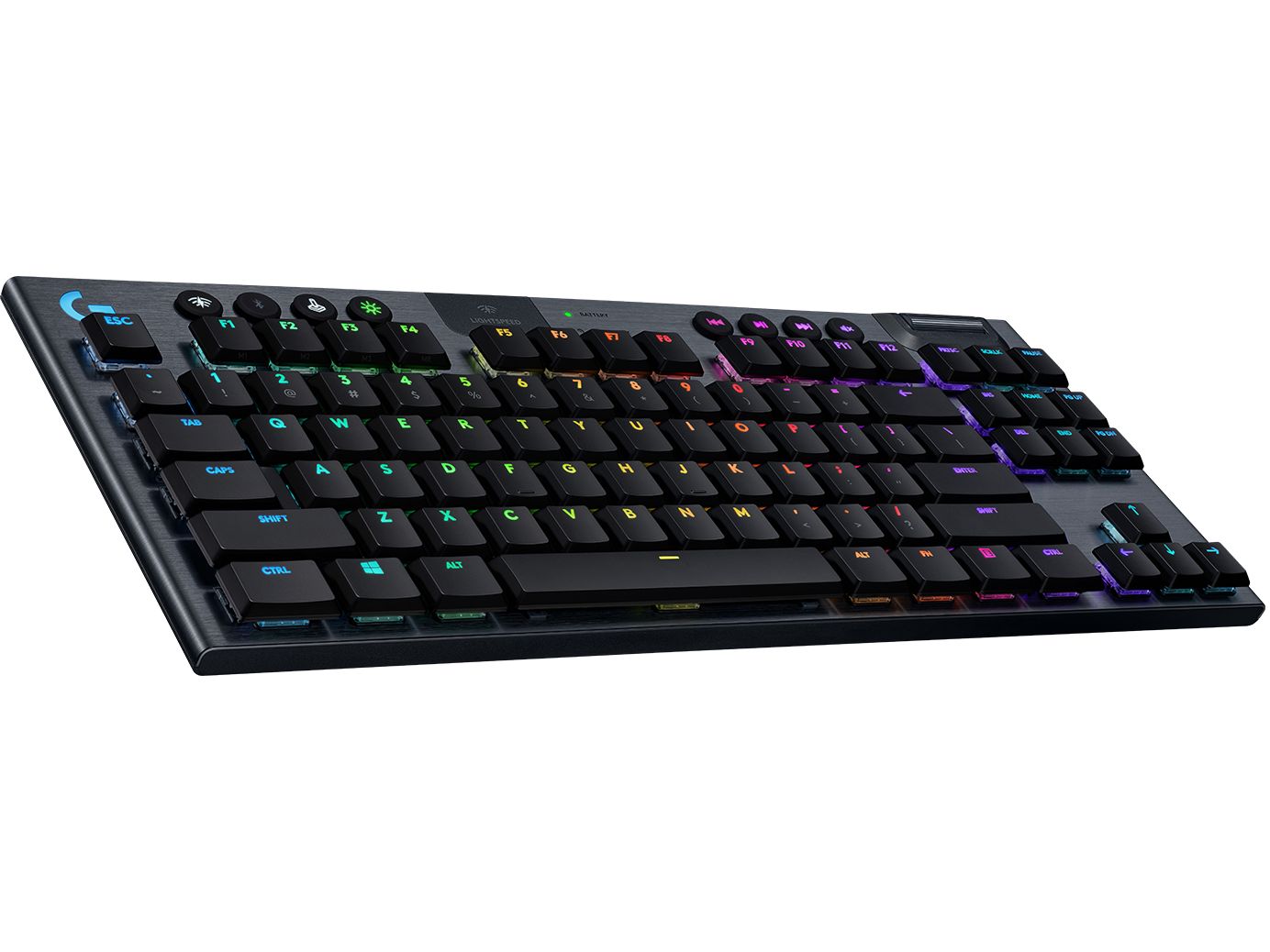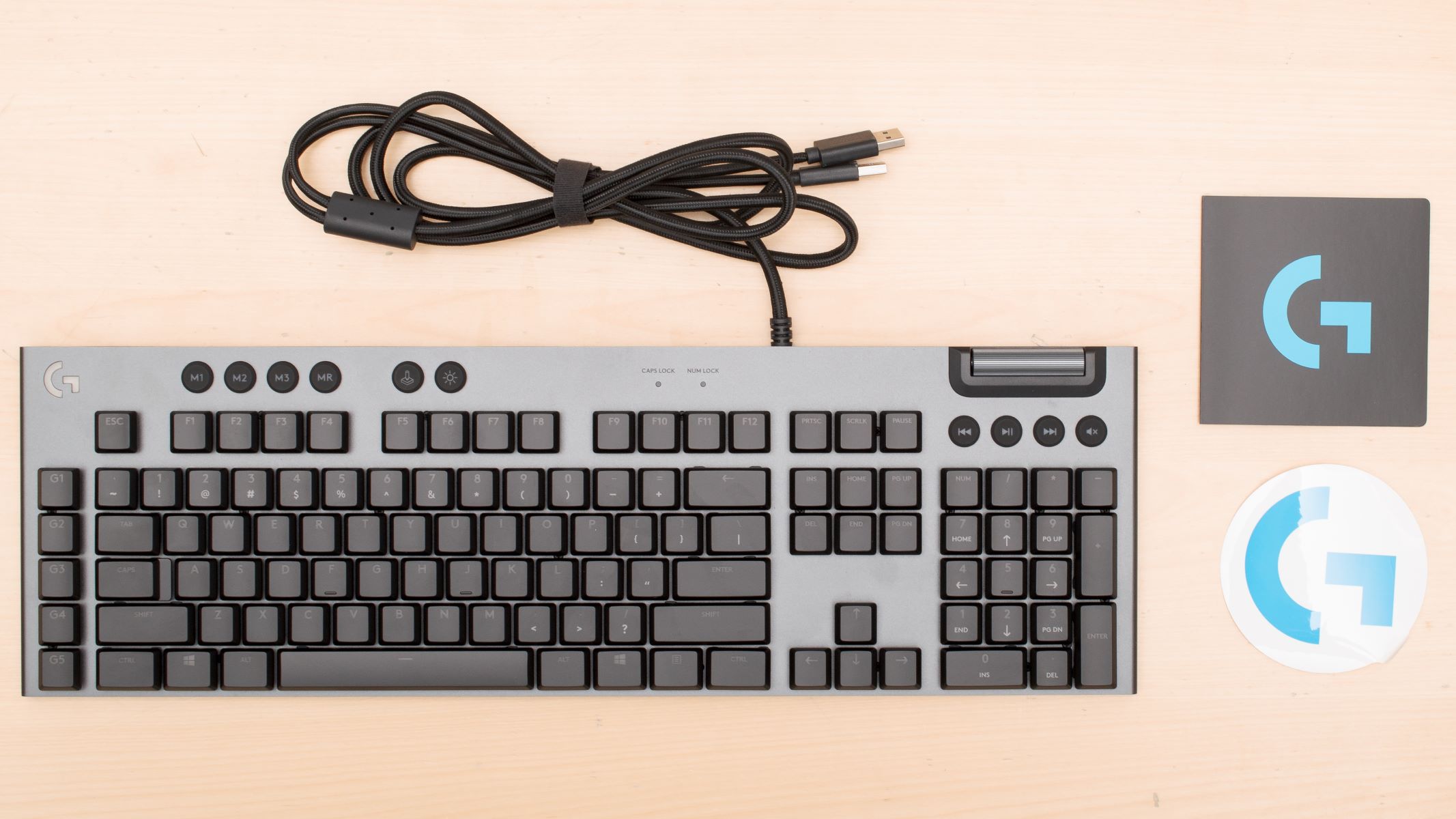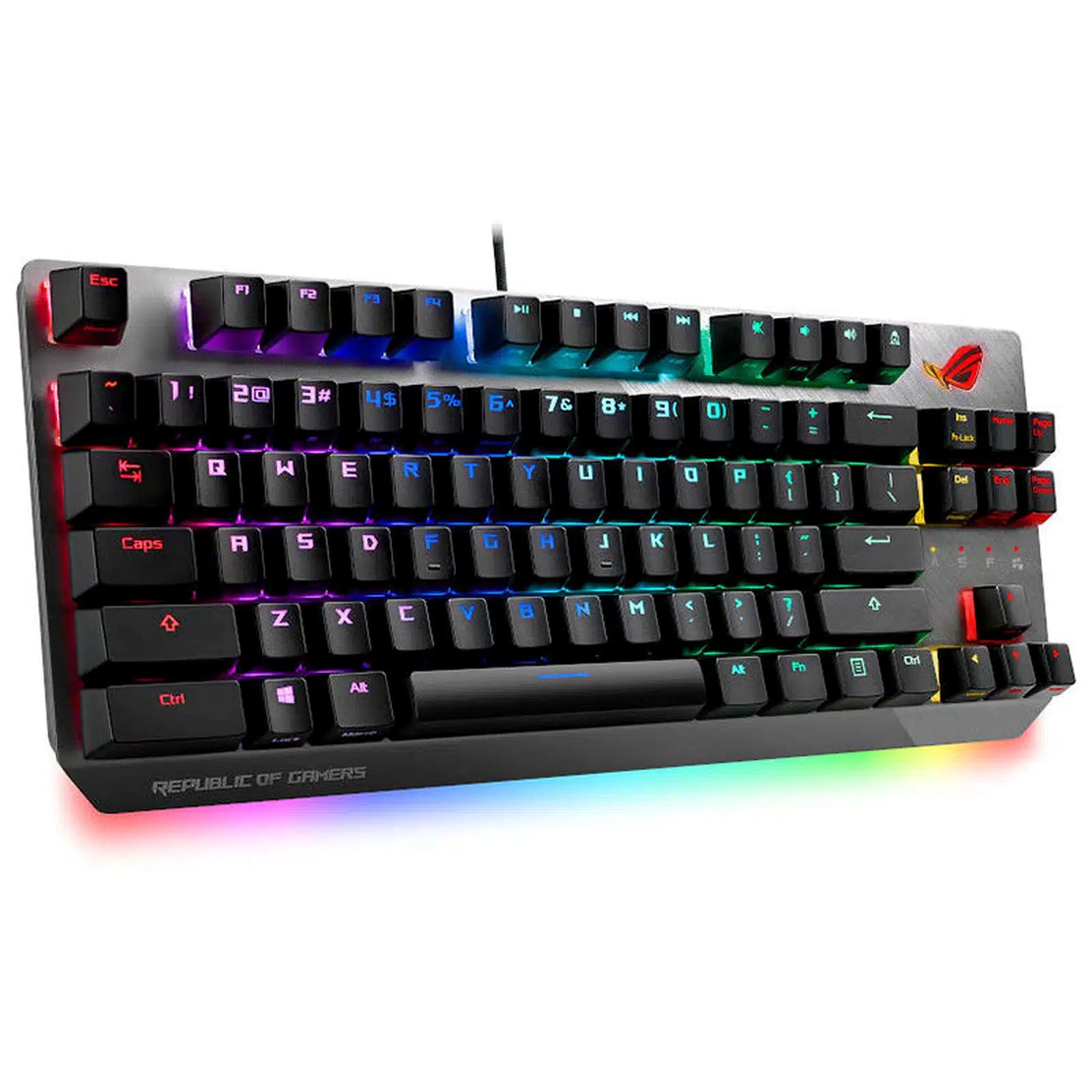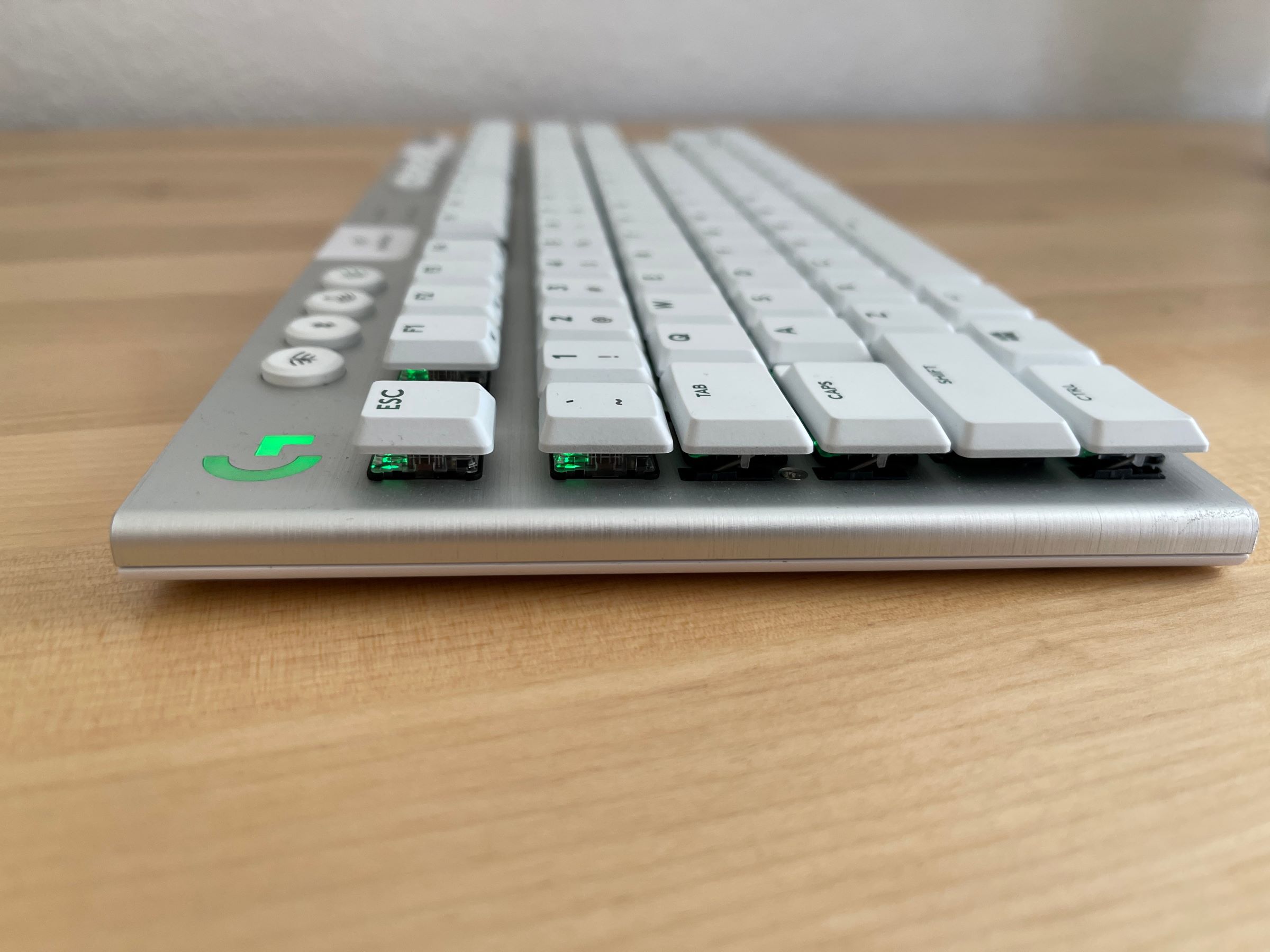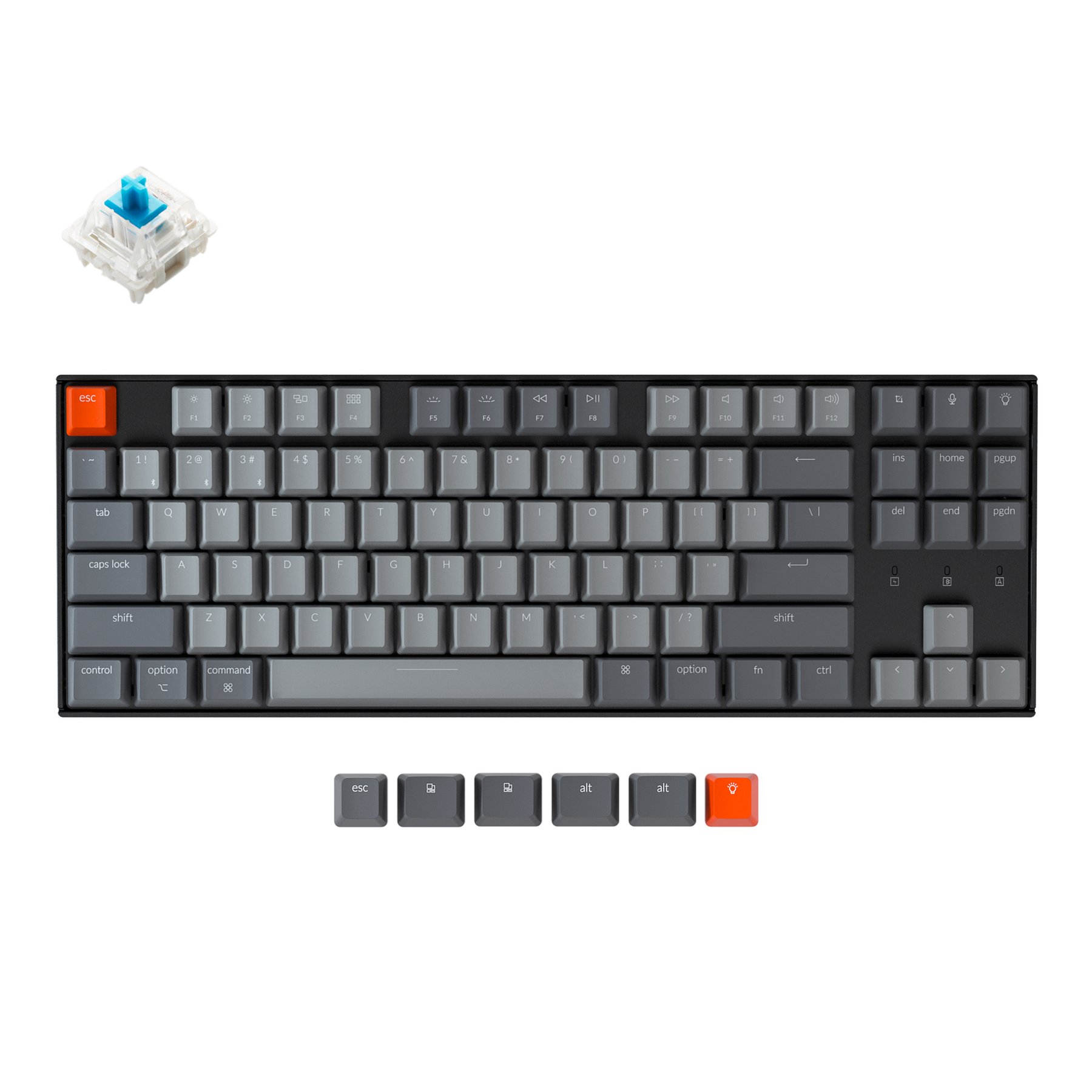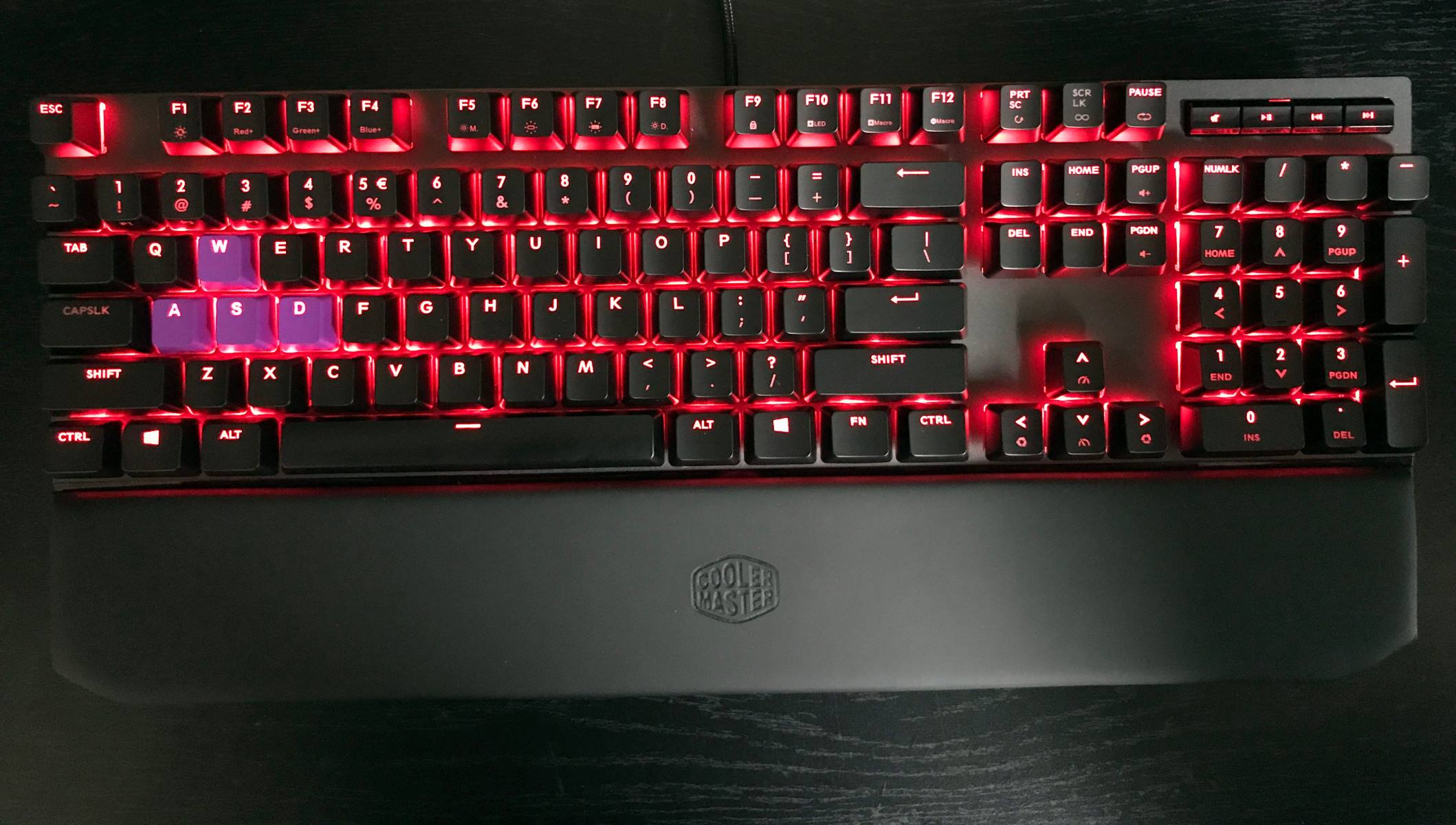Introduction:
A TKL keyboard, short for tenkeyless keyboard, is a compact keyboard layout that is gaining popularity among computer users, gamers, and professionals. It offers a smaller footprint compared to traditional full-sized keyboards by eliminating the numeric keypad on the right side. This reduction in size provides more space for comfortable mouse movements, making it a preferred choice for those who prioritize desk space and portability.
While TKL keyboards may seem like a relatively new concept, they have been around for quite some time, with several manufacturers offering various options to cater to different user preferences. Despite their smaller size, TKL keyboards still offer a full range of functionality and can be an excellent choice for those who don’t frequently use the numeric keypad or prefer a more streamlined setup.
In this article, we will delve into the specifics of TKL keyboards, exploring the number of keys they contain, their layout, and the functions they serve. Whether you are considering upgrading to a TKL keyboard or simply curious about this popular keyboard layout, this article will provide you with a comprehensive understanding of TKL keyboards and their key features.
What is a TKL Keyboard?
A TKL keyboard, also known as a tenkeyless keyboard, is a type of keyboard layout that omits the numeric keypad typically found on the right side of a traditional full-sized keyboard. This compact design allows for a smaller and more streamlined keyboard, making it ideal for users who require more desk space or frequently travel with their keyboards.
TKL keyboards retain all of the essential keys required for regular typing, such as alphanumeric keys, modifier keys, function keys, navigation keys, and arrow keys. The main difference is the absence of the numeric keypad, which is usually used for numerical input or as an extended set of navigational keys.
TKL keyboards are often sought after by gamers and professionals in fields such as programming and design. Gamers appreciate the additional space for mouse movements, allowing for quicker reflexes and precise aiming during gameplay. Professionals benefit from the compact layout, as it facilitates a more ergonomic typing position by reducing the distance between the keyboard and mouse, resulting in increased productivity and reduced strain on the wrists.
Due to their popularity, TKL keyboards are available in various designs, ranging from mechanical keyboards with customizable RGB lighting to wireless and compact Bluetooth options. These keyboards can be further customized with different keycaps, switches, and additional macro keys, catering to individual preferences and enhancing the overall typing or gaming experience.
It’s important to note that while the numeric keypad is not present on TKL keyboards, the numeric keys are usually accessible through a function key combination or by utilizing the number row on the top of the keyboard. This means that users can still input numbers, perform calculations, and utilize the numeric keypad functionalities, albeit with slight modifications to their typing habits.
In the next section, we will explore the number of keys present on a TKL keyboard in more detail, further highlighting the specific functionality of these compact yet versatile keyboards.
Number of Keys on a TKL Keyboard
A TKL keyboard, as the name suggests, removes the numeric keypad found on traditional full-sized keyboards. While the removal of the numeric keypad may be the most noticeable difference, it’s important to understand the overall key layout of a TKL keyboard.
On average, a TKL keyboard typically has around 87 to 88 keys, which is slightly fewer than the standard 104 to 105 keys found on full-sized keyboards. Despite this reduction in keys, TKL keyboards still provide ample functionality for most users’ needs.
The keys present on a TKL keyboard can be broadly categorized into several main groups:
- Alphanumeric Keys: These are the standard keys used for typing, consisting of the 26 letters of the alphabet, numbers 0-9, and various symbols and punctuation marks. The alphanumeric keys on a TKL keyboard are arranged in the same QWERTY layout as on a full-sized keyboard.
- Modifier Keys: TKL keyboards feature the essential modifier keys, including Shift, Alt, and Ctrl. These keys are crucial for executing various keyboard shortcuts and commands, enabling users to perform tasks more efficiently.
- Function Keys: Function keys, commonly abbreviated as F1 through F12, are located along the top row of a TKL keyboard. These keys serve different functions depending on the operating system and software being used. They can be programmed to perform specific actions, such as adjusting volume, opening applications, or executing macros.
- Navigation Keys: TKL keyboards retain navigation keys, including the arrow keys (Up, Down, Left, and Right), which are used for moving around documents, web pages, and spreadsheets. Additionally, Home, End, Page Up, and Page Down keys are also present to facilitate efficient navigation.
- Specialty Keys: Some TKL keyboards may include additional specialty keys, such as Print Screen, Scroll Lock, and Pause/Break keys. Additionally, multimedia control keys for volume adjustment, media playback, and accessing shortcuts for email and web browsing may also be incorporated into the keyboard’s layout.
Despite the smaller size and reduced number of keys, TKL keyboards offer a functional and practical typing experience. They are suitable for a wide range of users, including gamers, professionals, and individuals looking for a more compact keyboard solution.
In the following sections, we will dive deeper into the functionalities of these key groups, providing a comprehensive overview of the features that TKL keyboards offer.
Alphanumeric Keys
The alphanumeric keys on a TKL keyboard are the heart of the keyboard and are used for typing letters, numbers, and symbols. They follow the standard QWERTY layout, named after the first six letters on the top row of keys.
The layout of the alphanumeric keys on a TKL keyboard is designed for maximum efficiency and familiarity, allowing users to type quickly and accurately. The keys are organized in rows, with the top row consisting of the letters Q to P, followed by the row with the letters A to L, then the row with the letters Z to M, and finally the bottom row with the letters V to N. The numbers 1 to 0 are placed above the letter keys.
In addition to the letters and numbers, the alphanumeric keys also include various symbols and punctuation marks. These include commonly used symbols such as the exclamation mark, question mark, dollar sign, and percentage sign, as well as less frequently used symbols like braces, brackets, and ampersand.
The alphanumeric keys on a TKL keyboard are essential for everyday typing tasks such as writing emails, documents, coding, and more. Their layout and placement closely resemble that of a full-sized keyboard, ensuring a seamless transition for users.
Additionally, some TKL keyboards come with customizable keycap options. This allows users to personalize their keyboards by replacing the default keycaps with ones that feature different colors, fonts, or even custom designs. The ability to swap keycaps adds a unique touch to the keyboard, further enhancing the user’s typing experience.
Overall, the alphanumeric keys on a TKL keyboard provide the necessary tools for efficient and accurate typing. Whether you’re a writer, student, programmer, or simply someone who uses a keyboard extensively, the alphanumeric keys on a TKL keyboard ensure that you can type comfortably and effortlessly.
In the next section, we will explore another important group of keys on a TKL keyboard: the modifier keys.
Modifier Keys
Modifier keys on a TKL keyboard are an essential part of the layout and play a crucial role in executing various keyboard shortcuts and commands. They enhance the functionality of the keyboard by modifying the output of other keys when they are pressed in combination.
The most commonly used modifier keys on a TKL keyboard include:
- Shift: The Shift key allows users to type capital letters and access alternate characters on the keyboard. Pressing Shift in combination with an alphanumeric key produces the uppercase version of the letter or the alternate character associated with that key.
- Alt (Option key on Mac): The Alt key, also known as the Option key on Mac, is used in conjunction with other keys to access additional characters, symbols, or perform specific functions within applications. For example, Alt + Tab is a common shortcut to switch between open applications on Windows.
- Ctrl (Command key on Mac): The Ctrl key, known as the Command key on Mac, is often used in combination with other keys to perform various tasks, such as copying and pasting text, undoing actions, or saving files.
- Windows (Command key on Mac): The Windows key, also known as the Command key on Mac, is primarily used for accessing the Start Menu on Windows computers. It can also be utilized in conjunction with other keys to execute specific shortcuts or commands.
- Alt Gr (Right Alt): The Alt Gr key, often found on international keyboards, is used to access additional characters and symbols, especially those commonly used in non-English languages.
Modifier keys provide enhanced flexibility and productivity by allowing users to perform actions with fewer keystrokes. They are particularly useful in applications such as word processors, graphic design software, and spreadsheets, where keyboard shortcuts can significantly improve workflow efficiency.
Furthermore, many software programs and operating systems allow users to customize the actions associated with modifier key combinations. This customization empowers users to create their own shortcuts or modify existing ones to suit their specific needs and preferences.
Overall, modifier keys on a TKL keyboard give users the ability to extend the functionality of the keyboard beyond individual keys, offering a seamless and efficient typing experience. By utilizing these keys, users can optimize their workflow, navigate through applications, and perform various actions with ease.
In the next section, we will explore the function keys, another vital group of keys on a TKL keyboard.
Function Keys
Function keys, commonly labeled as F1 through F12, are a group of keys located along the top row of a TKL keyboard. These keys serve various functions and can be quite versatile, offering a range of capabilities depending on the operating system and software being used.
Here’s a breakdown of the typical functions associated with function keys:
- F1: The F1 key is often used as a help key, providing context-sensitive assistance within applications or launching a help menu.
- F2: The F2 key is commonly associated with renaming files or folders. In some applications, it can also serve as a hotkey for editing or renaming selected elements.
- F3: The F3 key is frequently used to search for a term within applications or file explorers. It can also trigger various search functionalities depending on the software being used.
- F4: The F4 key is often employed to close windows or exit applications. It can also be used in conjunction with other keys to execute specific actions, such as opening the address bar in a web browser.
- F5: The F5 key is widely recognized as the refresh key, allowing users to update web pages or reload content within applications. It is also commonly used for refreshing file directories in file explorers.
- F6: The F6 key is often associated with navigating between different sections or panes within an application. In web browsers, it can be used to cycle through different elements on a webpage.
- F7: The F7 key is primarily used for spelling and grammar checking in word processors and text editors. It can also trigger other language-related functions in different software applications.
- F8: The F8 key has various functions depending on the context. It is commonly used during computer startup to access advanced boot options or serve as a shortcut for entering Safe Mode.
- F9: The F9 key’s functionality varies across different software programs. In office suites, it is often associated with updating character formatting or performing calculation operations. In media players, it can be used to pause or play audio or video.
- F10: The F10 key is typically used to activate menu bars within applications, allowing users to access various options and commands. In some applications, it may have specific functions associated with it.
- F11: The F11 key is commonly known as the fullscreen key, allowing users to toggle fullscreen mode in web browsers, media players, and other applications that support this feature.
- F12: The F12 key’s functionality depends on the software being used. In many web browsers, it opens the developer console, whereas in office applications, it often serves as a shortcut for saving files.
It’s worth noting that the specific functions of function keys may differ across operating systems and software applications. Some keyboards or software may even allow users to remap the function keys to suit their individual preferences or assign specific functions to them.
Function keys on a TKL keyboard provide quick access to various commands and shortcuts, enhancing productivity and workflow efficiency. By understanding and utilizing these keys, users can navigate through applications, perform specific actions, and streamline their tasks.
In the next section, we will explore the navigation keys on a TKL keyboard, which are crucial for efficient movement and selection within documents and applications.
Navigation Keys
The navigation keys on a TKL keyboard are a group of keys that provide precise movement and selection within documents, applications, and web pages. These keys are essential for efficient navigation and control, ensuring users can easily move through content and make precise selections.
The navigation keys typically found on a TKL keyboard include:
- Arrow Keys: The arrow keys, consisting of the Up, Down, Left, and Right keys, are primarily used for scrolling through documents, web pages, and spreadsheets, as well as navigating menus and selecting options. They allow users to move the cursor or selection in a specific direction.
- Home: The Home key is used to move the cursor or selection to the beginning of a line or document, depending on the context. It provides a quick way to jump to the starting point of content.
- End: The End key is the counterpart to the Home key, allowing users to move the cursor or selection to the end of a line or document, depending on the context. It provides a convenient way to reach the end of content efficiently.
- Page Up: The Page Up key allows users to scroll up and navigate to the previous page or screenful of content. It is particularly useful when browsing through long documents or web pages.
- Page Down: The Page Down key is the opposite of the Page Up key, enabling users to scroll down and navigate to the next page or screenful of content. It assists in effortless navigation through lengthy documents or web pages.
These navigation keys play a crucial role in providing precision and control over cursor movement on a TKL keyboard. They are particularly useful for tasks that require accurate selection, such as editing documents, navigating through spreadsheets, or highlighting specific text within a browser or word processor.
In addition to the primary navigation keys, some TKL keyboards may include secondary navigation keys, such as Insert, Delete, and Backspace. These keys help users manage text and make edits more efficiently.
By utilizing the navigation keys on a TKL keyboard, users can effortlessly move through content, make precise selections, and navigate interfaces with precision and control. These keys improve workflow efficiency and enhance the overall user experience.
In the next section, we will explore the arrow keys in more detail, as they are an integral part of the navigation keys on a TKL keyboard.
Arrow Keys
The arrow keys on a TKL keyboard, consisting of the Up, Down, Left, and Right keys, provide precise directional movement within documents, applications, and interfaces. These keys are an essential part of the navigation keys and are crucial for scrolling, selecting, and navigating through content.
Here’s a breakdown of the functions performed by each arrow key:
- Up Arrow: The Up Arrow key is primarily used for scrolling upward or moving the cursor or selection up within a document or interface. It allows for vertical movement within content, such as moving up lines or navigating through menus.
- Down Arrow: The Down Arrow key serves the opposite function of the Up Arrow key. It is used to scroll downward or move the cursor or selection down within a document or interface. It enables users to navigate and access content that extends beyond the visible screen.
- Left Arrow: The Left Arrow key is commonly used for scrolling leftward or moving the cursor or selection to the left within a document or interface. It facilitates horizontal movement, such as navigating through lines of text or selecting options in menus.
- Right Arrow: The Right Arrow key complements the Left Arrow key by enabling scrolling rightward or moving the cursor or selection to the right within a document or interface. It allows for horizontal movement, such as navigating through lines of text or selecting options in menus.
The arrow keys on a TKL keyboard provide precise movement, allowing users to scroll through content, navigate cells in spreadsheets, make selections in text editors, and control elements within applications. They offer finer control compared to other navigation methods, such as clicking and dragging with a mouse.
Many software applications utilize the arrow keys for additional functionalities. For example, in graphical editors or design software, the arrow keys are often used for nudging or aligning objects. In gaming, these keys are frequently used for character or camera movement.
It’s worth noting that some keyboards may feature an additional Fn (Function) key, allowing users to utilize extra functionalities of the arrow keys. This can include media controls, brightness adjustments, volume control, or custom shortcuts, depending on the keyboard’s design and features.
The arrow keys on a TKL keyboard provide users with precise directional control, enhancing navigation and selection capabilities within various applications and interfaces. Their versatile functionality makes them an indispensable part of the keyboard layout, offering convenience and precision during everyday computer use.
In the next section, we will explore the numeric keypad, another commonly found group of keys on traditional full-sized keyboards.
Numeric Keypad
The numeric keypad, commonly known as the number pad, is a group of keys located on the right side of a traditional full-sized keyboard. However, on a TKL keyboard, this dedicated numeric keypad is omitted to create a more compact and space-efficient layout.
The numeric keypad is primarily used for entering numerical data quickly and efficiently. It consists of a layout similar to that of a calculator, with numbers ranging from 0 to 9 and additional mathematical operators such as addition, subtraction, multiplication, and division.
While the numeric keypad is absent on a TKL keyboard, the functionality of these numbers and operators is not lost. TKL keyboards typically feature secondary functions on the alphanumeric keys or other key combinations that allow users to input numerical data.
For example, the numbers 0 to 9 are typically located on the top row of the keyboard, above the letter keys. To enter a number, users would simply press the corresponding key. The addition (+), subtraction (-), multiplication (*), and division (/) operators can often be accessed by using the Shift key in combination with the appropriate key.
Alternatively, some TKL keyboards may feature a dedicated number row above the letter keys, similar to the layout of a laptop keyboard. This design preserves the convenience of a separate number row while maintaining a compact form factor.
While using the alphanumeric keys to input numbers may require a small adjustment in typing habits for users accustomed to a numeric keypad, it can still provide efficient and accurate numerical input. Moreover, this layout allows for more flexibility in terms of keyboard placement and mobility.
It’s worth mentioning that for users who rely heavily on numerical input or work extensively with spreadsheets, finance applications, or data entry, a full-sized keyboard with a numeric keypad might be more suitable. However, for most users and general typing purposes, a TKL keyboard’s omission of the numeric keypad does not pose any significant limitations.
In the next section, we will explore another important group of keys that are commonly found on full-sized keyboards: the media control keys.
Media Control Keys
Media control keys are a group of keys found on some keyboards, including full-sized keyboards, that provide convenient control over multimedia playback and volume. These keys allow users to adjust audio settings, navigate through media content, and control playback without the need to access software interfaces or mouse-based controls.
While the presence of media control keys on TKL keyboards can vary depending on the specific model, some TKL keyboards may include secondary functions on certain keys or key combinations that provide similar media control functionalities.
Media control keys commonly found on keyboards include:
- Play/Pause: This key allows users to start or pause the playback of media files, such as music or videos.
- Stop: The stop key immediately halts the playback of media files.
- Previous/Next Track: These keys enable users to navigate to the previous or next track in a playlist or media library.
- Volume Up/Down: These keys control the volume levels, allowing users to increase or decrease audio output.
- Mute: The mute key instantly toggles the audio output between muted and unmuted states.
Media control keys provide a convenient way to manage multimedia playback without requiring users to switch focus to media player applications. Whether listening to music, watching videos, or participating in conference calls, having quick access to media control functionality enhances the overall user experience.
If a TKL keyboard lacks dedicated media control keys, users can still access these functions by utilizing keyboard shortcuts or software-based controls. These shortcuts are often customizable, allowing users to assign their preferred shortcuts or remap existing keys to perform media control functions.
Additionally, some TKL keyboards may include secondary functions on other keys, allowing users to control media playback or adjust volume by using key combinations. These secondary functions are typically activated by holding down a designated modifier key, such as the Fn (Function) key, in combination with the desired key.
While media control keys may not be a standard feature on all TKL keyboards, the availability of alternative methods to control media playback and volume ensures that users can still enjoy seamless and convenient control over their multimedia content.
Next, we will conclude our exploration of TKL keyboards and summarize the key features and advantages they offer.
Conclusion
TKL keyboards, or tenkeyless keyboards, offer a compact and streamlined layout without sacrificing essential functionality. By removing the numeric keypad, TKL keyboards save space, making them an excellent choice for users who prioritize a smaller footprint or require enhanced mobility.
Despite the omission of the numeric keypad, TKL keyboards still provide all the necessary keys for typing, including alphanumeric keys, modifier keys, function keys, navigation keys, arrow keys, and sometimes even media control keys.
Whether you’re a gamer looking for more space for mouse movements, a programmer seeking a more ergonomic typing position, or a professional in need of a portable keyboard solution, TKL keyboards offer numerous advantages. Their compact size, customizable options, and versatile key layout make them suitable for a variety of applications and user preferences.
While TKL keyboards may require a slight adjustment in typing habits, they provide a seamless transition for users accustomed to full-sized keyboards. The alphanumeric keys allow for accurate and efficient typing, while the modifier keys, function keys, navigation keys, and arrow keys ensure precise control and navigation within documents, applications, and interfaces.
Even without a dedicated numeric keypad, TKL keyboards offer alternative methods for inputting numerical data with the use of secondary key functions or number rows. This layout allows for increased flexibility and portability, without compromising on productivity.
Furthermore, the availability of media control keys or alternate control methods provides convenient media playback and volume adjustment, enhancing the overall user experience.
In summary, TKL keyboards are a popular choice for those seeking a compact and efficient typing solution. With their versatile layout, comfortable typing experience, and flexibility, they offer a viable alternative to full-sized keyboards while maintaining essential functionality for a wide range of computer users.







